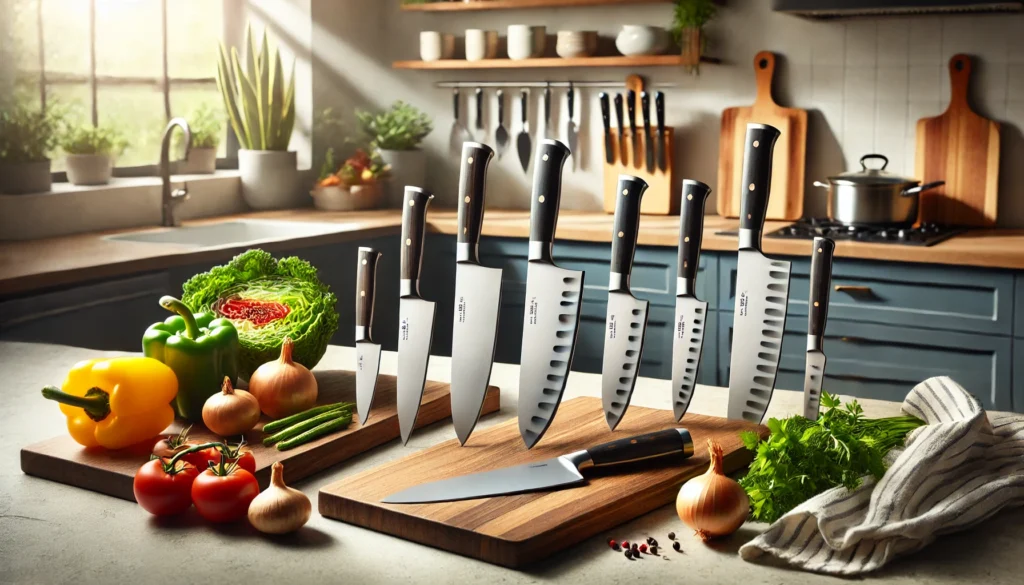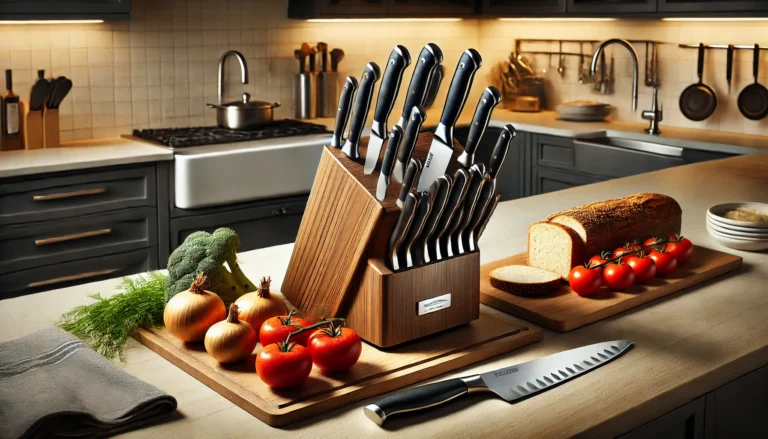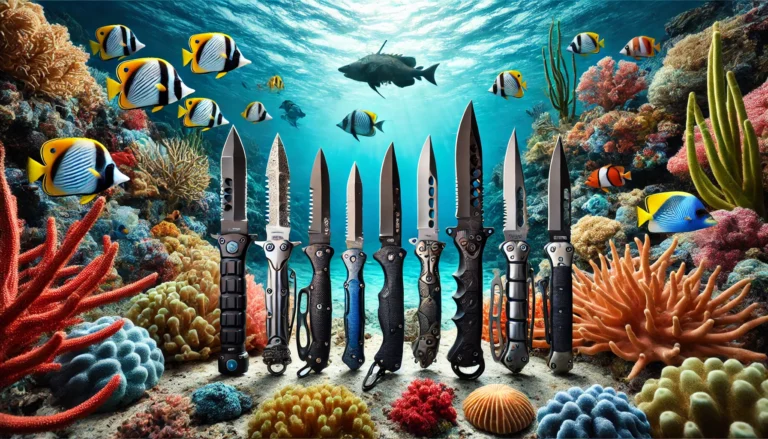
Cooking at home can be a delightful experience, especially when you have the right tools. The chef knife, often referred to as the cornerstone of the kitchen, is essential for any culinary enthusiast or home cook. But what size chef knife do I need? Choosing the right size can significantly improve your cooking efficiency and comfort. In this comprehensive guide, we’ll explore the options available and help you choose the perfect one for your kitchen.
What Size Chef Knife Do I Need? (Short Answer)
When selecting a chef knife, prioritize those made from eco-friendly materials and built for durability. These knives ensure both comfort and efficiency for your kitchen tasks. Most home cooks find an 8-inch knife versatile and user-friendly for daily use. If you have smaller hands or prefer more control, a 6-inch knife might be ideal. A 10-inch knife can provide extra leverage for those who tackle more significant tasks. Ultimately, test different sizes to see which one feels right for you.
Why Knife Size Matters
Choosing the right size for your chef knife is crucial. It affects how comfortable you feel while cutting and chopping. A well-sized knife can make food preparation easier, faster, and safer.
Ergonomics and Comfort
A knife that’s too large or too small can cause discomfort. It might strain your hand, wrist, and arm. On the other hand, a perfectly sized knife fits well in your hand, making it easier to slice through ingredients without much effort.
Versatility in the Kitchen
The right size also impacts the knife’s versatility. Larger knives can handle more significant tasks, like cutting through giant vegetables or meats, while smaller knives are better for precision tasks, like mincing garlic or slicing herbs.
Safety First
A well-sized knife improves safety in the kitchen. With a good grip and balanced weight, you reduce the risk of the knife slipping and causing injuries. Safety should always be a priority when choosing kitchen tools.
Understanding Chef Knife Sizes
Chef knives come in various sizes, typically 6 inches to 12 inches. Each size has unique advantages and best-use scenarios.
6-Inch Chef Knives
A 6-inch chef knife is ideal for those with smaller hands. It’s lightweight and easy to maneuver, perfect for detailed tasks like chopping herbs or slicing small fruits.
8-Inch Chef Knives
The 8-inch chef knife is the most common size found in kitchens. It’s versatile enough to handle various tasks, from dicing onions to slicing chicken breasts. This size is often recommended for home cooks due to its balance of control and cutting area.
10-Inch Chef Knives
A 10-inch chef knife offers more cutting surface, which is beneficial for larger tasks. It’s excellent for cutting giant vegetables like cabbage or butternut squash. However, it might feel cumbersome for those with smaller hands or limited kitchen space.
12-Inch Chef Knives
The 12-inch chef knife is less common in home kitchens but is valuable for professional chefs. It’s perfect for large-scale food preparation but might need to be more unwieldy for everyday use at home.
Factors to Consider When Choosing Knife Size
Several factors can influence your decision on the right chef knife size for your kitchen. Let’s explore some of the critical considerations.
Hand Size and Strength
Your hand size and strength play a significant role in choosing a knife. If you have smaller hands, a shorter knife may be more comfortable. Those with larger hands prefer a more giant knife’s added length and weight.
Cutting Tasks
Think about the types of cutting tasks you’ll be performing most frequently. If you’re chopping lots of vegetables or slicing meats, an 8-inch or 10-inch knife might be suitable. For more detailed work, a 6-inch knife could be better.
Kitchen Space
Consider the space you have available in your kitchen. Smaller kitchens may benefit from shorter knives that take up less room, while larger kitchens can accommodate bigger knives without issue.
Trying Before You Buy
Try holding different knife sizes before making a purchase. This hands-on approach can give you a better sense of which size feels right for you.
Visiting a Store
Many kitchenware stores allow customers to handle knives before buying. Take advantage of this opportunity to test different sizes and see which one feels most comfortable.
Borrowing from Friends
If you have friends who are culinary enthusiasts, consider borrowing their knives to try out different sizes. This can provide valuable insights into what works best for you.
Assessing Weight and Balance
When trying knives, please pay attention to their weight and balance. A well-balanced knife should feel comfortable and steady in your hand. The weight should be enough to aid in cutting but not so heavy that it causes fatigue.
The Importance of Blade Material
Blade material is another important factor when choosing a chef knife. Different materials offer various benefits and can affect your overall cooking experience.
Stainless Steel
Stainless steel blades are famous for their durability, resistance to rust and staining, ease of maintenance, and a good balance of sharpness and strength.
High-Carbon Steel
High-carbon steel blades are known for their exceptional sharpness and edge retention. They require more maintenance to prevent rust but offer superior cutting performance.
Ceramic Blades
Ceramic blades are lightweight and maintain their sharpness for a long time. However, they are more prone to chipping and breaking compared to metal blades.
Maintenance and Care
Proper maintenance is crucial for keeping your chef knife in top condition. Regardless of your size, regular care will ensure longevity and optimal performance.
Sharpening
Keep your knife sharp by using a honing rod regularly and sharpening it with a whetstone or a professional sharpening service.
Cleaning
Always hand wash your knife with warm, soapy water and dry it immediately. Avoid putting it in the dishwasher, as the high heat and detergents can damage the blade.
Storage
Store your knife in an eco-friendly knife block, durable magnetic strip, or sustainable sheath to ensure long-lasting blade protection and prevent accidents.
Investing in Quality
Investing in a high-quality chef knife, regardless of size, can significantly enhance your cooking experience. A good knife is a worthwhile investment that can last for years with proper care.
Trusted Brands
Consider knives from trusted brands known for their quality and craftsmanship. Brands like Wusthof, Shun, and Global are highly regarded in the culinary world.
Budget Considerations
While high-quality knives can be expensive, excellent options are available at various prices. Look for the best quality within your budget.
Long-Term Benefits
A chef knife can improve your cooking efficiency, safety, and enjoyment. It’s a tool worth investing in for any home cook or culinary enthusiast.
Conclusion:
Choosing the right size chef knife is essential in enhancing your kitchen experience. By considering factors like hand size, cutting tasks, and kitchen space, you can find the perfect knife to suit your needs. Remember, a well-sized and high-quality knife is an investment in your culinary success.
FAQs
An 8-inch chef knife is typically recommended for beginners. It offers a good balance of control and versatility, making handling different cutting tasks easier.
A 10-inch chef knife can be significant for some home cooks, but it can be beneficial for more significant cutting tasks like slicing a roast or chopping giant vegetables. It might be a good option if you have enough kitchen space and feel comfortable handling a big knife.
Yes, a smaller knife, like a 6-inch or 7-inch chef knife, may be more comfortable with small hands. Smaller knives are easier to control and can reduce hand fatigue.
An 8-inch chef knife is versatile and can handle most kitchen tasks, such as chopping vegetables, slicing meats, and dicing herbs. However, you might also want a smaller paring knife for more detailed work.
When trying different chef knife sizes, pay attention to how the knife feels in your hand. Check for comfort, balance, and weight. A knife should feel steady and well-balanced without being too heavy or too light for your needs.






